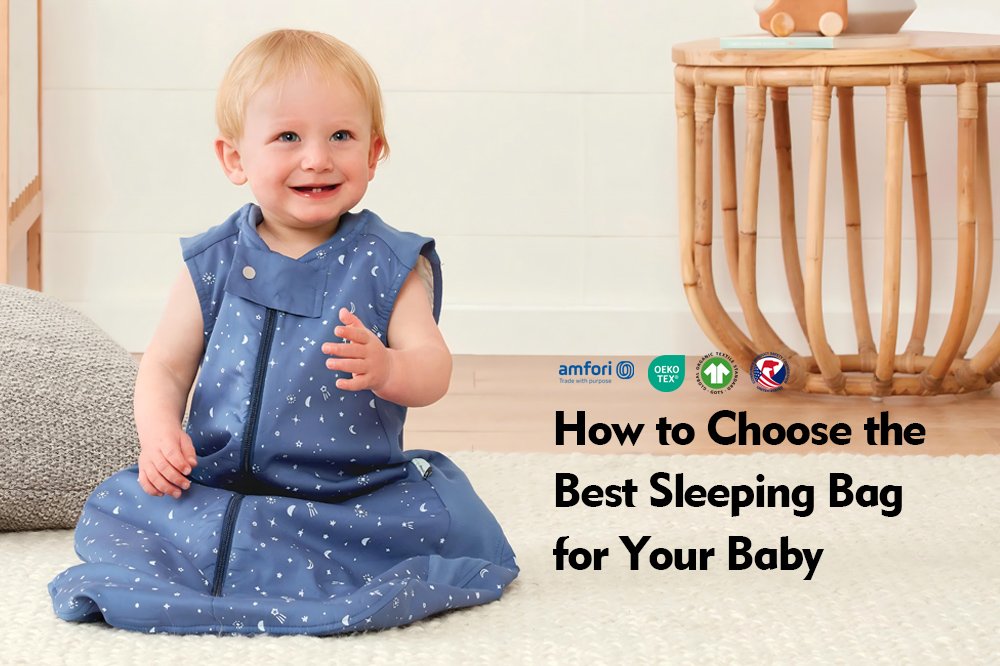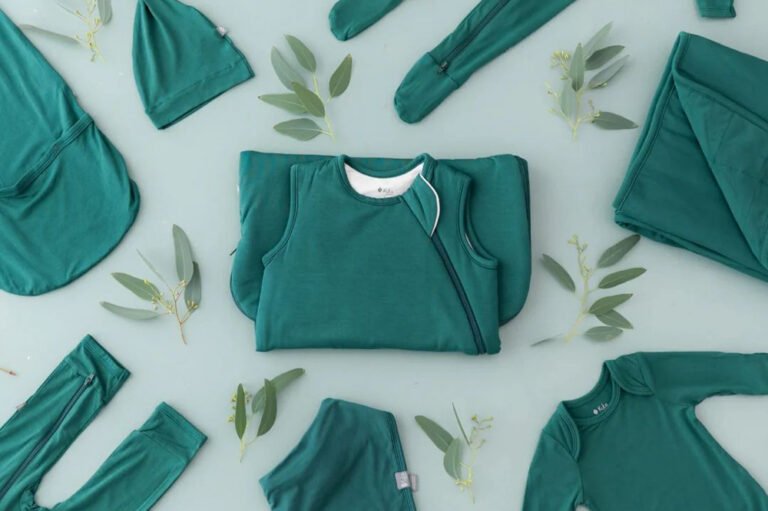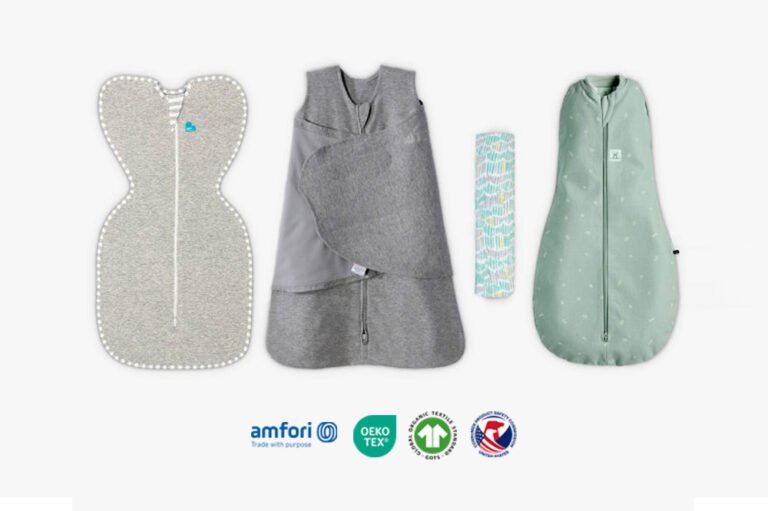When it comes to ensuring your baby’s comfort and safety during sleep, selecting the right sleeping bag is essential. As a factory specializing in manufacturing organic, eco-friendly, and sustainable baby sleeping bags, we’ve seen firsthand how important it is for parents to find the perfect fit for their little ones. This guide will walk you through the key aspects of choosing the best sleeping bag for your baby, including age and weight considerations, TOG ratings, fabric choices, and practical features.

Age and Weight Recommendations for Baby Sleeping Bags
Selecting the correct size of a sleeping bag is vital for both the safety and comfort of your baby. Baby sleeping bags come in various sizes, each designed for specific age groups and weight ranges.
- Newborns (0-6 months): For this age group, a snug fit around the neck and arms is important. The sleeping bag should be long enough to give your baby room to stretch, but not so big that it causes a suffocation risk. Look for bags that specify an appropriate weight range.
- 6-18 months: As your baby grows, you can transition to larger sleeping bags that accommodate their increased mobility. Be sure to check the weight limits on the sleeping bag to ensure a proper fit.
- 18 months and older: Toddler sleeping bags are generally larger and allow more room for movement. Some come with detachable sleeves to adjust to different temperatures.
Choosing the right size not only ensures comfort but also helps prevent accidents like slipping inside the bag or overheating.
TOG (Thermal Overall Grade) and Its Importance
- What is TOG? TOG stands for Thermal Overall Grade, which indicates how warm the sleeping bag will keep your baby. The higher the TOG rating, the warmer the bag.
When to use different TOG ratings:
- 0.5 TOG: Ideal for warm summer nights or room temperatures above 24°C (75°F).
- 1.0 TOG: Suitable for slightly cooler environments, with room temperatures between 20-24°C (68-75°F).
- 2.5 TOG: Perfect for room temperatures of 16-20°C (61-68°F), commonly used in cooler climates or during autumn and winter.
- 3.5 TOG: Best for very cold environments or winter nights where room temperatures drop below 16°C (61°F).
Using the correct TOG ensures your baby is comfortable and avoids overheating, which is a risk factor for SIDS (Sudden Infant Death Syndrome).
Fabric Choices: Cotton, Bamboo, Hemp
The fabric of the baby sleeping bag can greatly affect the comfort and sustainability of the product.
- Cotton: Organic cotton is soft, breathable, and hypoallergenic, making it a popular choice for baby clothing and sleeping bags. It provides natural ventilation and helps regulate your baby’s body temperature.
- Bamboo: Bamboo fabric is a rising star in the eco-friendly textiles industry. It’s not only sustainable but also extremely soft and breathable. Bamboo fabric has natural moisture-wicking properties, keeping babies dry and comfortable all night long.
- Hemp: Hemp is a highly durable and sustainable fabric, ideal for eco-conscious parents. It’s naturally resistant to mold and UV light, making it a strong, long-lasting option for baby sleeping bags. Hemp is also biodegradable, adding to its appeal for environmentally friendly baby products.
Each fabric offers unique benefits, so choosing between cotton, bamboo, or hemp depends on your specific needs for comfort, sustainability, and care.
Practical Features: Zippers, Snaps, Armholes
In addition to size, TOG, and fabric, the practical features of a sleeping bag can make a significant difference in daily use.
- Zippers: Double zippers that allow for easy diaper changes are a popular feature in many sleeping bags. Look for zippers that are smooth, durable, and have a protective flap to prevent irritation on your baby’s skin.
- Snaps: Some sleeping bags feature adjustable snaps at the shoulders, which make it easier to get your baby in and out of the bag, and provide a secure fit.
- Armholes: Properly sized armholes ensure that your baby’s arms remain free and mobile, while still keeping the sleeping bag in place. Some designs include adjustable armholes to accommodate growth and movement.
These features enhance the functionality of the sleeping bag and make caring for your baby easier.
FAQs About Choosing the Best Sleeping Bag for Your Baby
How do I know if my baby’s sleeping bag is too warm?
If your baby’s neck or chest feels sweaty or hot, it’s a sign that they might be too warm. Adjust the room temperature or switch to a lower TOG sleeping bag.
Can I use a sleeping bag with a newborn?
Yes, as long as it’s the right size and weight for your newborn. Ensure a snug fit around the neck and arms to prevent the baby from slipping inside the bag.
Which fabric is best for sensitive skin?
Organic cotton and bamboo fabrics are excellent choices for sensitive skin due to their softness and hypoallergenic properties.
Can I use a sleeping bag year-round?
Yes, by selecting the appropriate TOG rating for each season, you can use a baby sleeping bag throughout the year.
What is the lifespan of a baby sleeping bag?
High-quality baby sleeping bags can last through multiple stages of growth, especially if they are made from durable materials like hemp.
Do sleeping bags affect sleep quality?
A well-chosen sleeping bag can improve sleep quality by maintaining the right temperature and allowing free movement within safe boundaries.






